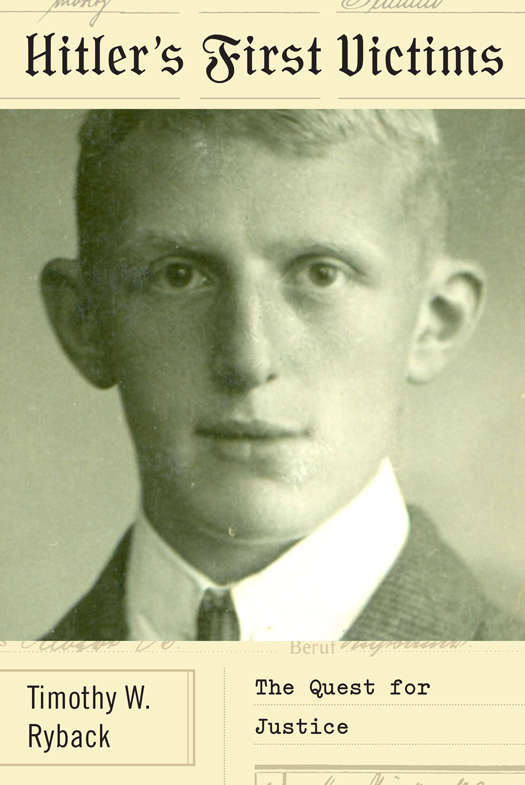
Hitler's First Victims
The Quest for Justice
کتاب های مرتبط
- اطلاعات
- نقد و بررسی
- دیدگاه کاربران
نقد و بررسی

September 1, 2014
A painstakingly researched work regards the brief period early in Hitler's chancellorship when the murderous events at Dachau might have been stopped by law and order. Paris-based author Ryback (Hitler's Private Library: The Books that Shaped His Life, 2008, etc.) tracks the crescendo of events in early 1933, after Hitler blamed the mysterious Reichstag fire on a communist conspiracy and a wave of arrests began filling the first concentration camp outside Munich-accompanied by suspicious deaths. Deputy prosecutor Josef Hartinger of the Dachau jurisdiction, where the detention center for political prisoners had been erected on the site of a former munitions factory, was informed on April 13 that four prisoners had been shot and killed while trying to escape. Investigating the murders, Hartinger and a few loyal colleagues discovered that the prison was not under the command of Bavarian state police, but under the Nazi SS: vicious and unrestrained officers who had unleashed a string of atrocities against the victims (all of whom, it turned out, were Jews). More deaths followed, and Hartinger, a middling civil servant and devout Roman Catholic who showed astounding courage at this dangerous juncture, proceeded with indictments against the murderous guards, despite a warning from the chief prosecutor, in cahoots with chief of Bavarian police Heinrich Himmler, that he would not sign them. Nonetheless, before May 30, when Dachau was officially transferred to SS authority, there was an attempt to regulate it by the rule of law. Ryback ties Hartinger's report (which eventually surfaced at the postwar Nuremberg trials) to an earlier landmark study, Emil Gumbel's Four Years of Political Murder (1922), in which the University of Heidelberg professor attempted to explain the upsurge in violence sweeping the land of "poets and thinkers" in the immediate postwar years. A chilling, lawyerly study with laserlike focus.
COPYRIGHT(2014) Kirkus Reviews, ALL RIGHTS RESERVED.

Starred review from August 1, 2014
Ryback, the author of Hitler's Private Library (2008), here examines an early but enormously significant episode in the evolution of the Nazi program of genocide. In the spring of 1933, four Jewish men were summarily executed after they supposedly attempted to escape from the newly opened concentration camp near Dachau in southern Germany. Given the later enormity of Nazi murders, one might have expected these killings to be ignored. But in 1933 the Nazis were newly empowered and far from secure. Theirs was not yet a totalitarian regime. A local public prosecutor, Joseph Hartinger, followed procedure and investigated the case. He was, at first glance, an unlikely crusader. He was 39, a political conservative with virtually no experience in investigating murders. Despite the urging of his superiors to bury the case, Hartinger wouldn't relent. Full justice for the victims could not be achieved, but the camp commandant was dismissed, and killing of Jews ceased temporarily. Ryback poses the troubling and probably unanswerable question, Could, at that early date, a similarly decent stand taken by more Germans, within and outside the government, have delayed, modified, or even stopped the onset of genocide? This is an important addition to Holocaust collections.(Reprinted with permission of Booklist, copyright 2014, American Library Association.)

























دیدگاه کاربران